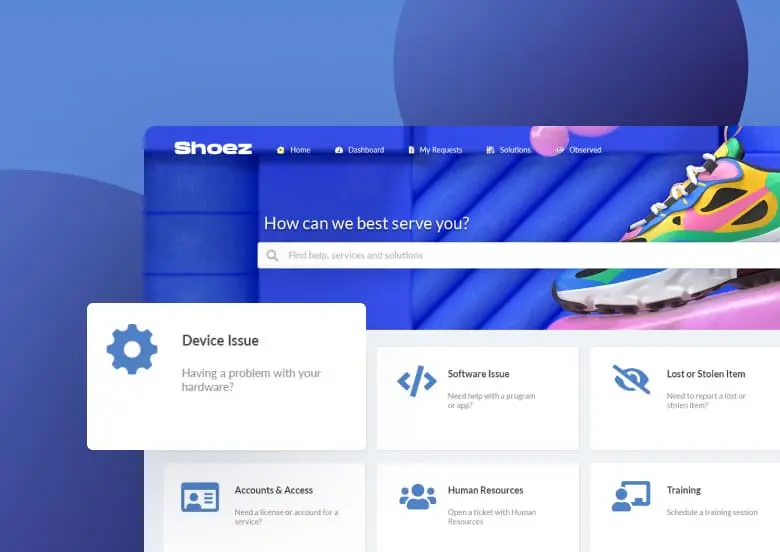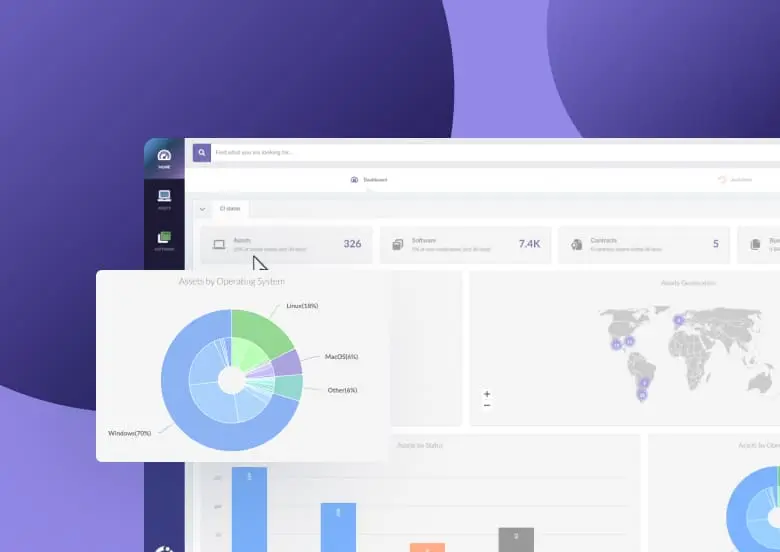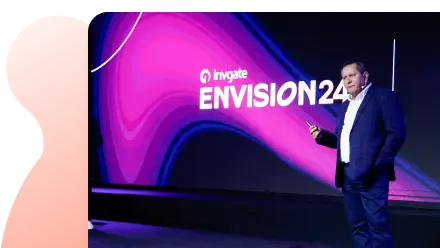IT Financial Management or ITFM is the practice of managing IT costs throughout an organization. Done well, it can effectively balance costs against effective service delivery. The goal is to combine both high quality IT operations and smart economical solutions.
In this sense, IT Asset Management (ITAM) becomes a close ally to have detailed information on your IT investments, helping you make sure everything is aligned and supports your business efficiency and performance.
Join us in the following sections as we unravel how the ITFM framework works to achieve this and what InvGate Asset Management features can help you out.
Are you ready to learn all about ITFM? Let's go.

What is IT Financial Management?
ITFM manages the financial aspects of your overall IT operations. It ensures that both IT assets are managed and IT services are provided in a cost-effectively manner, while at the same time delivering value to the organization.
Implementing this approach is a clear example of how proficient Asset Management thoroughly supports and improves IT Service Management (ITSM) across organizations.
The goals of ITFM include:
- Ensuring the appropriate commitment is in place for effective service delivery.
- Guaranteeing the appropriate level of funding for IT service delivery.
- Creating the right balance between cost and service quality.
- Ensuring the right balance between supply and demand is met.
To do so, ITFM is responsible for establishing a framework to manage the cost of services, evaluating the financial impact of strategies, and facilitating Asset Management. It balances income against expenses, manages and reports service expenditures, and executes financial policies and procedures.
ITFM vs. IT Budget Management
So, what's the difference between ITFM and IT Budget Management? They're the same thing, right? Wrong. An IT budget is a tool used by IT departments to plan spending. It consists of creating and managing a budget for the IT department. It involves estimating and securing the funds for IT initiatives and supports the area in planning and controlling their spending by setting limits and priorities for purchasing decisions.
ITFM has a broader scope. It is the practice that manages all aspects of IT service delivery. Its main objective is to ensure the cost-effective delivery of IT services while maximizing value for the organization. As well as being responsible for budgeting, it also looks after accounting, financial analysis, costing, charging, financial analytics, reporting, and Vendor Management.
IT Financial Management in ITIL
At this point, it’s clear that IT Financial Management is a practice that looks after IT finances. And, as such, it has been outlined by ITIL, the widely acclaimed ITSM framework.
In ITIL 4, ITFM is a General Management practice within the Service Value System or SVS. ITIL defines its purpose as "to support the organization's strategies and plans for Service Management by ensuring that the organization's financial resources and investments are being used effectively."
IT Financial Management framework
The ITFM framework offers a structured approach to ensure effective financial planning, control, and optimization of IT expenditures while delivering value to the business. It is made up of the following components:
- Financial Management Strategy - It ensures that ITFM objectives are aligned with the overall business strategy. It is responsible for understanding the organization's financial goals, creating financial policies and procedures, and establishing Financial Management governance.
- Financial analysis - It involves analyzing financial data to understand IT investments' costs, benefits, and risks. It helps the business make informed, data-driven decisions on IT spending and allows IT departments to optimize resource allocation and evaluate the financial viability of IT initiatives.
- Financial Management Support - It creates the appropriate structure for managing ITFM data and costs and links costs to specific services, making tracking their value easier over time.
- Financial Planning - It defines the financial resources over the planning period and allocates resources effectively.
- Financial Reporting - It analyzes the structure of service provisioning cost and the profitability of services. This supports the Service Portfolio Management practice to plan and forecast for activity in the pipeline area of the service portfolio.
- Service Invoicing - It creates invoices as part of the invoice management process between the IT service provider and the customer.
IT Financial Management process
ITFM looks after the end-to-end Financial Management of IT service support and delivery - this means, it looks after spending across all the stages.
This also means it plays a translational role between corporate financial systems and the IT department, and is supported by the following activities and sub-processes:
- Accounting - Enabling the organization to account fully for the money spent on IT service delivery. It tracks all IT spending and includes financial reporting, analysis, and cost recovery.
- Budgeting - Predicting and controlling the income and expenditure of money. It involves creating an IT budget, market analysis, identifying cost categories, and setting financial targets that can be referred to during reviews and audits.
- Charging - Billing customers for the services supplied to them. This process involves defining pricing models and chargeback mechanisms and publishing this information in the service catalog with the support of the service catalog management process.
ITFM best practices
An effective ITFM practice needs a structured implementation approach. Because it has quite a wide scope of action, there are many aspects that need taking care of. Some best practices include:
- Align to your organization - Work with your stakeholders to ensure ITFM objectives align with the rest of the business and manage IT spending and resource allocation appropriately.
- Create robust ITFM policies and procedures - These should address accounting, budgeting, costing, charging, and financial analysis. Ensure roles and responsibilities are codified in a RACI matrix, so all stakeholders know what to do when engaging with the process.
- Don't forget suppliers and partners - Work with the Supplier Management practice to manage supplier relationships and optimize contracts.
- Transparency matters - Create regular financial reports for your senior management team to communicate the financial health of your IT department, account for previous spending, report budget utilization, and any cost-saving initiatives.
- Build continuous improvement - Create a review schedule for your ITFM practice and build improvements based on stakeholder feedback, lessons learned, audit results, and changing business requirements.
Using InvGate to leverage ITIL Financial Management for IT services

InvGate Asset Management is an ITAM solution designed to track and manage IT assets across their whole lifecycle. Leveraging its functionalities will help you implement or improve your ITFM capabilities and optimize your costs.
Its IT Budgeting and Asset Depreciation feature is especially helpful to track IT contracts, financials, and asset depreciation. With it, you can keep an eye on any contract related to your IT assets – whether they are software licenses, warranties, leases, and more. In addition, Insight also calculates the depreciation cost of your assets, contributing with valuable data to make informed decisions regarding your finances.
On top of that, all this information is displayed in a user-friendly interface. Thanks to Insight’s customizable dashboards and reports, you can opt to see the information in real-time or schedule regular reports. Plus, you can easily measure, analyze, and share key metrics (such as Return On Investment or Asset Utilization) regarding your IT devices to quickly spot areas for improvement.
And since InvGate Asset Management is an ITAM tool, you’ll also have several other perks at your disposal, such as a complete IT inventory, software deployment and metering, and a CMDB.
This is just a sneak peek at what InvGate Asset Management can do for you when it comes to optimizing your Financial Management. If you want to find out more, don’t hesitate to book a call with our experts (totally open-ended) who will unravel the tools' full potential.
In short
IT Financial Management is the practice that manages all aspects of IT spending across an organization. This includes three main components: accounting, budgeting, and charging. The main goal is to ensure high quality IT services that also optimize spendings and continually looks to improve the coordination of both aspects.
A structured approach to ITFM will help coordinate the different activities that are under its scope and ensure that financial objectives align with business objectives. Incorporating ITAM software, designed to track assets and their relevant information (including data related to costs), will thoroughly improve the efficiency of your Financial Management.
If you want to see what InvGate Asset Management can do for your IT financial operations (and much more!) you can book a call right away with our experts who are ready to show you!
















